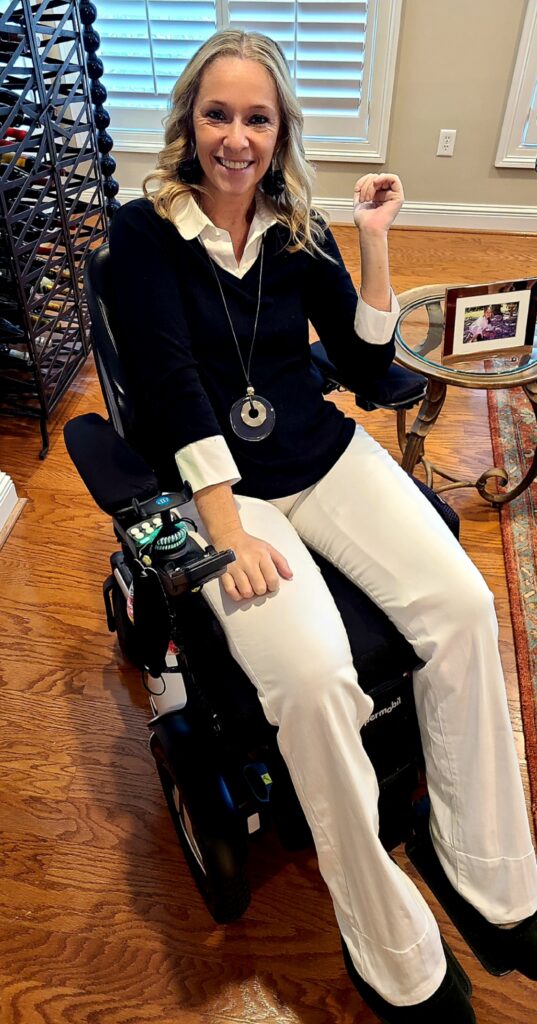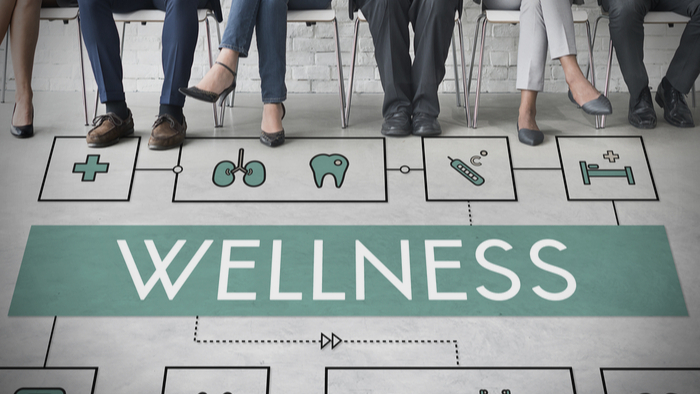
Before we can dive into Wellness and Preventative Care programs in the corporate world, we have to take a step back into dissecting Diversity, Equity, and Inclusion (DEI) with respect to the different elements of “DEI.”
It’s quite well-established now that DEI is a foundational component to the success of any business. There is solid evidence and research that has been conducted to make a strong business case for DEI to increase engagement, productivity, and return on investment.
When I think about DEI, the final element, “Inclusion,” really goes beneath the surface of who we are or the structures in which we exist. It’s all about what we do. Inclusion, in a word comes down to behaviors.
One could argue that inclusion truly is the linchpin of DEI. If you have an inclusive organization, you will naturally attract a more diverse workforce and foster more equitable practices. Inclusive behaviors can be defined as the “actions that make others feel valued, respected, seen, and heard.”
Belonging
What really brings DEI full circle with the concept of belonging. I have not reinvented the wheel with these ideas or concepts as there are many books written on this.
Belonging is that feeling that one’s authentic self is valued, respected, seen, and heard. It’s a very crux of inclusion and is consequently being added to many DEI acronyms today in the business world.
Unfortunately, belonging often times gets lumped into inclusion in terms of getting used interchangeably. This is really unfortunate and a mistake.
Inclusion refers to behaviors
Belonging is a feeling that is an outcome of inclusive behaviors.
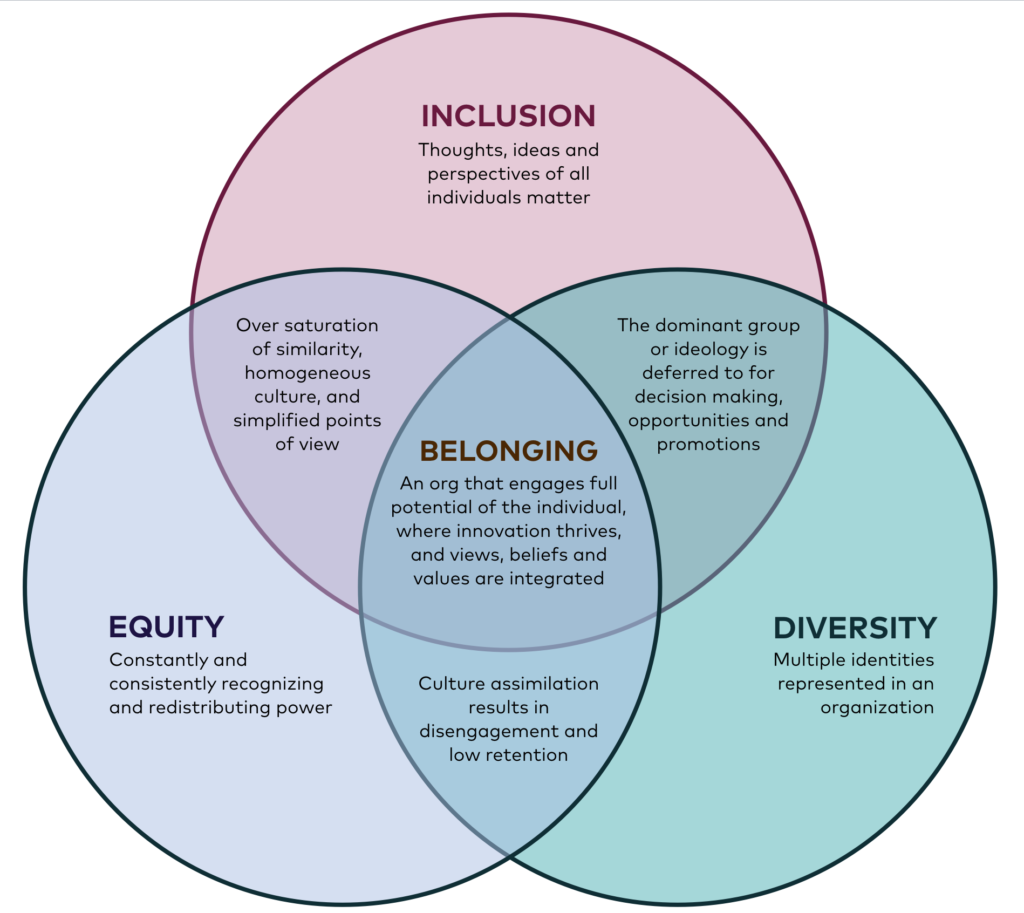
So, for the purposes of today I will be talking about how to improve a sense of belonging in the corporate world for employees through the lens of Wellness and Preventative Care. Many organizations are pushing forward on wellness initiatives, but are often missing the mark on making it a priority in their DEI strategy and getting it siloed as its own separate initiative.
There are daily conversations in the DEI world on pay equity, identity, gender, but what about wellness care from different perspectives and what it means for different identity groups within an employee population?
Disability
Disability is part of the human experience. Everyone without a disability is “temporarily able-dodied.” Whether you have had, have, or will have a disability it’s an experience that’s truly non-partisan and doesn’t discriminate against age, race, sex or sexual orientation.
Unfortunately, it’s a club 100% of you are going to join as you are just getting older and will require specialized solutions.
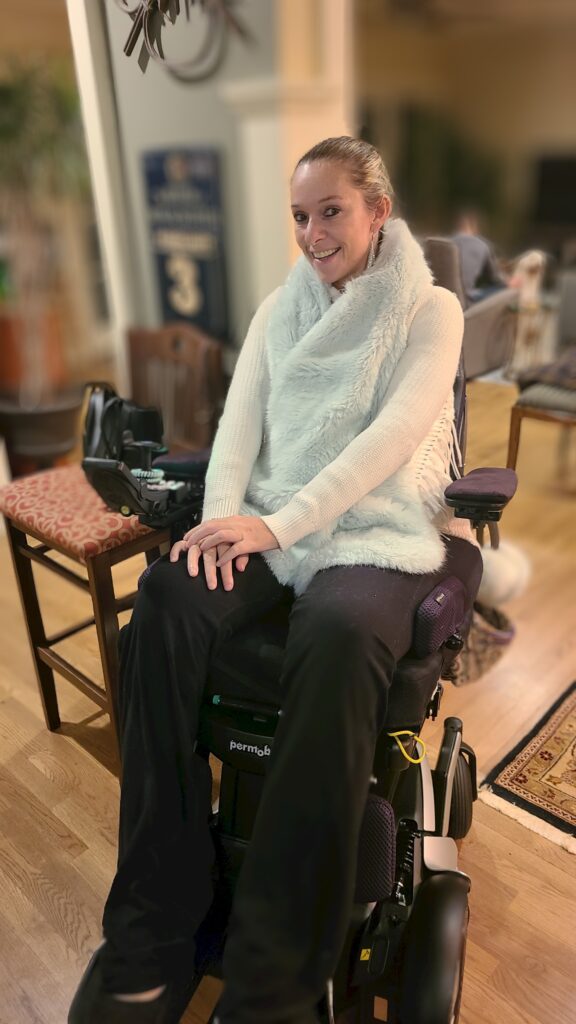
Think about this for a moment… Have you had a broken arm? A mental health crisis whether temporary or permanent? Diagnosed with an autoimmune disease? High cholesterol? Some of these are naturally temporary disabilities, but disabilities none-the-less.
When I think about the corporate world and wellness I think greatly about stress and quality of life. Even stress can be a disability because it’s scientifically proven that stress can lead to physical ailments. This is a disability albeit potentially temporary.
Interestingly, and research backs this up, people with disabilities are some of the most creative problem solvers at work, stay in jobs longer, increase profits, revenue, etc.
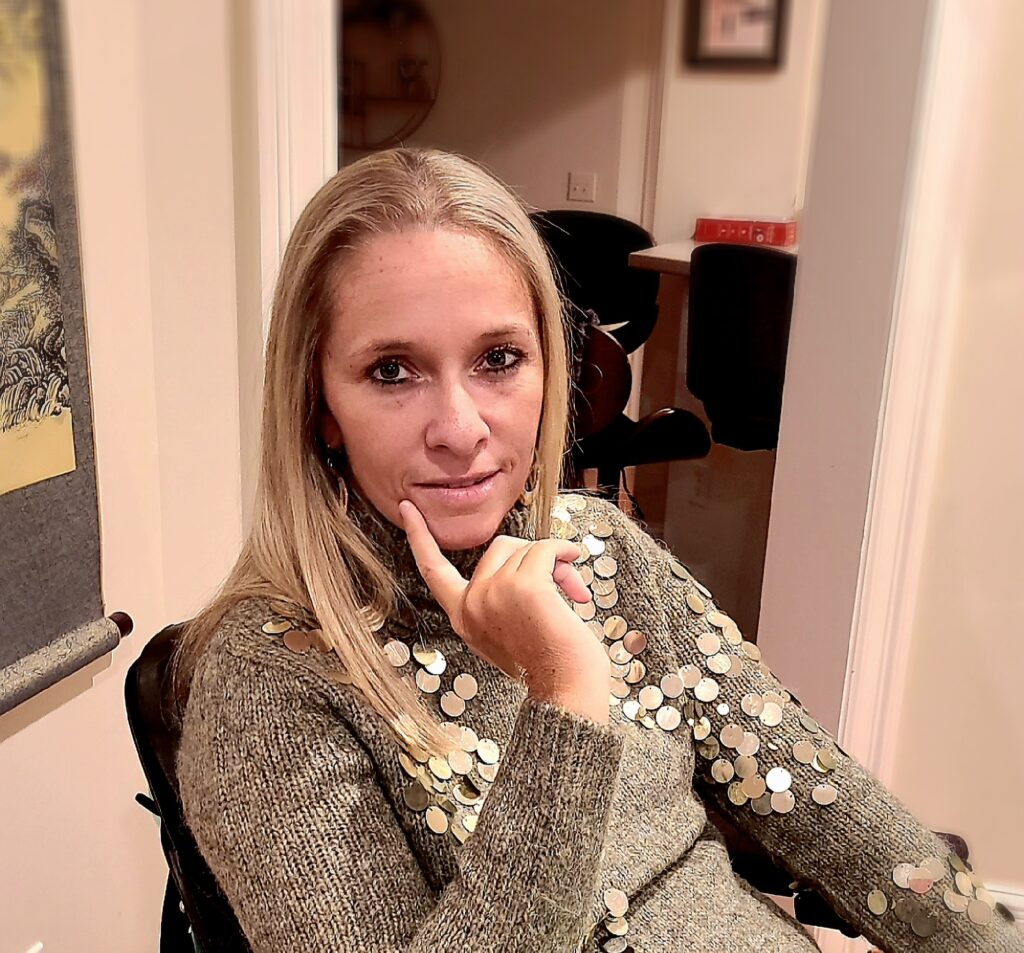
Did you know?
- 1 in 4 people on the planet have a disability? That’s nearly 1 billion people on the planet that we know of representing 15% of the population
- 80% of these disabilities are unseen
- 8 out of 10 people will acquire a disability throughout their life
- 91% of these disabilities arise from chronic illnesses and 9% from accidents
- The labor force is comprised of nearly 30% of people with disabilities, but surprisingly only 3% identify with a disability for fear of being treated differently.
Why corporations need to care and focus more intentionally and inclusively on wellness and preventative care.
While companies can show up with the intent to make changes to policies and procedures, they can’t fix people. They can, however, take the time and space to understand the needs and wants of their employees to understand how they can increase levels of engagement.

People who feel like they belong in an organization show higher levels of engagement leading to increased productivity and increased business profits.
Companies need to critically examine and ask the questions to their employees where the barriers and friction points arise for them with respect to their needs, wants, desires, and access needs as a relates to wellness and preventative care.
By creating a safe space to listen to employees, companies can better learn where these friction areas arise and where we need to course correct as an organization to reduce exclusion in the digital space, physical space, and cultural space.
This will, of course, require data. Data is tricky. Data measured incorrectly, non-inclusively, and interpreted poorly will naturally lead to more harm to an organization. How are you collecting this data? How are you measuring it? Are you keeping this in house or hiring external consultants? I recommend a combo of both because you run into that analogy of “it’s challenging to see the forest beyond the trees” when you’re trying to keep everything in-house. Getting a fresh outside perspective can reduce emotional friction at times to improve the success of making changes.
Personal Self Care
You naturally can’t rely on your organization to take care of you 100% of the time. You have to take care of yourself as well. Do you do yoga every day? Meditation? How do you manage stress? Do you run? Do you take a 30 minute break for yourself at home to think and have a cup of tea or watch a movie?
Personally, I have a therapist. She grounds me each week and doesn’t let me get away with anything and makes me re-examine my priorities. She asks thought-provoking questions and plants ideas. I take these ideas and make them my own actions. We think with ideas, not information. We also cannot rely on other people to try and fix our problems. This parts on us.

Professional Self-Care
Just as equitable pay amongst underrepresented groups is measured with data, as an example, it’s absolutely critical for organizations to focus on creative strategies for wellness and preventative care for their employees. This input from employees needs to be integrated into the DEI roadmap strategy to create an inclusive culture.
It’s not just about getting the job done, but working with employees collaboratively and listen to them to create a warm and welcoming environment.
Who are your employees?
Are they mothers, people with disabilities, employees with religions that require special holidays, the list goes on.

As leaders in an organization, we also have to look at biases. What are the stereotypes we are holding that lead biases, which ultimately to lead to discrimination. Let’s take working mothers as an example. Just because they may need flexible work schedule hours to take care of their children does not make them any less capable of their jobs. There’s been a stigma for decades and still continues to be there to some extent surrounding working mothers not being a serious about their jobs. This naturally needs to change.
As human beings we each have different needs that require different strategies for wellness and preventative care. As organizations, we have to be flexible.
How do we do this?
Well, in a word, data to start. We need to collect this data in a safe and inclusive way to understand our employee’s needs. There are dozens of books written on how to do this from designing inclusive surveys, focus groups, employee resource groups, etc. This all brings attention to how we best support our employees to bring their authentic selves to work so we reduce the risk of workplace burnout.
This is also not a siloed effort. Of course, this has to come from senior leaders and employees working collaboratively together and having a senior leader champion on our sides.

Research
a new research report by Work Human and Gallup shows that employee wellness has a significant hand in reducing levels of burnout, increasing the feeling of better social well-being, increasing higher levels of belonging, and increasing feelings of thriving.
These employee wellness programs have a demonstrable impact on the physical health and health care costs employees incur as well.
A few statistics for you:
- Nearly 9 in 10 employees consider the benefits package when evaluating an employer.
- More than half of Generation Z’ers and millennial’s consider wellness programs extremely important when looking at a job.
- On retaining talent, 67% of employees who work for organizations with wellness programs like their jobs more and are likely to recommend their company to others.
- The cost of voluntary turnover due to burnout is 15 to 20% of payroll budgets each year. That means employee well-being amounts to hundreds of millions of dollars annually.
- If those numbers are not eye-popping enough there is 20 million of opportunity loss for every 10,000 workers due to low well-being injury not performance. That translates up to 322 billion costs globally and turnover in lost productivity one low well-being shows up as employee burnout.
- Employees are up to 2X as likely to report having experienced a lot of gratitude than the previous day and about 40% less likely to report having experienced a lot of stress, worry and sadness.
- Employees who lack a strong sense of belonging are up to 12x is likely to be disengaged and 5x is likely to be looking for a job.
The research statistics really go on and on…
Now, let’s talk about specific programs:
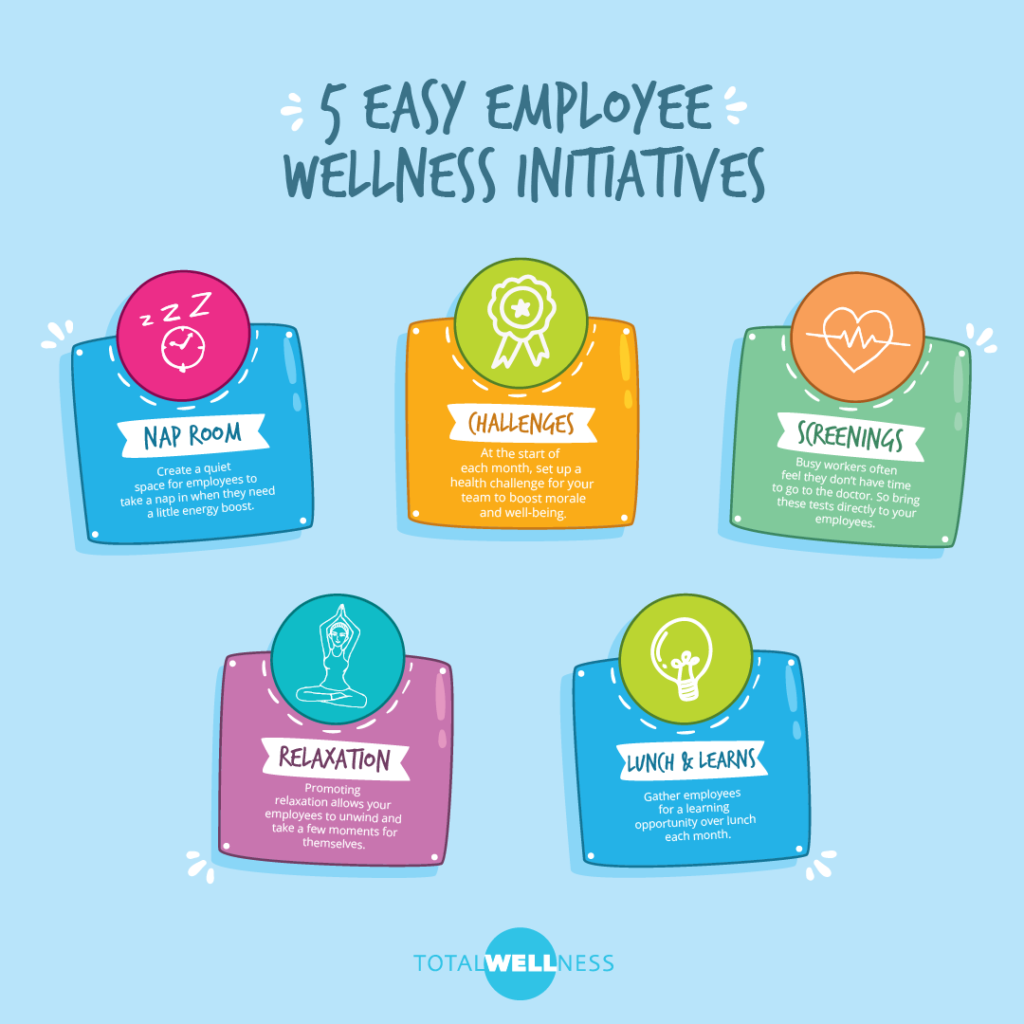
- Scheduling annual exams
- Incentive wellness programs
- Offering regular mental health programs such as access to therapists
- Meditation time
- On-site physical fitness centers
- Quit Smoking programs
- Transit Incentives
- Accessible outdoor adventures
- Flexible work hours and remote working arrangements
- Financial Education incentive programs
- Gym memberships
- Support and community involvement outside the office
- Distressing activities such as mindful meditation or tai chi your relaxation techniques in the workplace
There’s something to fit everyone’s organizational budget and at the end of the day it comes down to giving your employees the autonomy to tell you what they need, not what you think they need.
Most people move, sense, and feel differently and as a result are the best advocates in their own life to tell you what is important to them.
It’s not enough for a company to have the intent to make change, but these intentions have to lead to action and ultimately meaningful and inclusive outcomes fostering a sense of belonging in an organization. Remember, this is progress over perfection as a dear friend of mine always reminds me. We are not going to get this right every time, we’re going to stumble along the way, but we have to constantly iterate the process in order to achieve the greatest impact.
